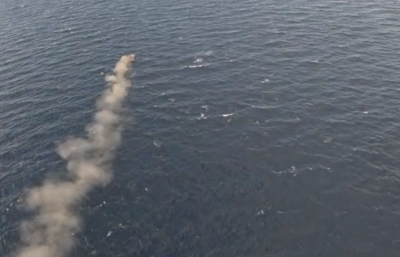Before we get to the checklists: Consider rewarding crew that think of ways to improve safety on your vessel. Money is one way, but during fishing, I find sleep to be a more valuable commodity. An extra hour in the rack can be worth about a million dollars some days.
The following is a companion to the feature story Staying Safe in Bristol Bay
Safety Gear
- First Aid Kit
- Ditch Bag (waterproof kayak bag with handheld VHF, handheld
- EPIRB, flares, small first aid kit)
- Man Overboard Sling for retrieval
- Man Overboard retrieval system (Game Hoist, self-locking, 4:1 reduction, 500-lb maximum lift, @ $30)
- Deck-hose extension with quick-connect for dewatering (long enough to reach into your foc’sle as well as your lazarette. Also can be used to assist in dewatering of other vessels)
- Water-activated PFDs for ALL crew to wear during unloading, rough weather, and while on the bow tying up and anchoring.
- Damage Control Kit (wooden plugs, inner-tube rubber in 1-inch rolls and 4-8-inch sheets, splash zone)
- Check all running lights, deck lights, engine room lights.
- Replace/repair as necessary.
- Have waterproof flashlights with fresh batteries stored in key locations ready for use (engine room, foc’sle, lazarette)
- Test ALL alarms (bilge high water, smoke, carbon monoxide, etc.)
- Inspect anchor gear. Replace worn anchor rode, wire all shackles with SS wire.
- Maintenance on all water-tight deck hatches (grease rubber seals and mechanical opening/closing handle, adjust for water-tight integrity)
Compliance
- Drill Instructor Card
- Current First Aid Card
- Current Flares
- Current Renewal of life raft (if applicable)
- USCG-approved life ring with minimum 90 feet of line
- USCG-approved survival suits (with current battery for lights)
- EPIRB if required (current registration/battery)
- USCG-approved fire extinguishers
- Carbon monoxide detectors in living areas
- Smoke detectors in living area, engine room
In-Season
- Develop and maintain a culture of safety. Making Safety A Habit should be the ultimate goal of everyone on the boat. Remember: Good Habits are Bad to Break.
- USCG required Drill Instruction by qualified instructor every 30 days (man overboard, fire, flooding, grounding, mayday)
- Develop communication protocols for deck. Example: Skipper: “Set!” Crew: “Setting!” EVERY command should be verbally acknowledged by crew loud enough to be heard by skipper. Call/Response method of communication minimizes confusion, increases efficiency, and allows for a vessel to operate with consistency that leads to increased safety.
- Review safety protocols for ALL deck activities (delivering, anchoring, tying up, balling off, running the net, retrieving the ball, etc.) Example: PFDs required for ALL crew while unloading, Anyone going to the bow for any reason wears a PFD. One crew ONLY gives commands to crane operator while unloading.

Michael “MJ” Jackson owns and operates the F/V Kelley J. He has fished in Bristol Bay for more than 30 years, is a board member of the Bristol Bay Regional Seafood Development Association and lives in Bellingham, Wash.







